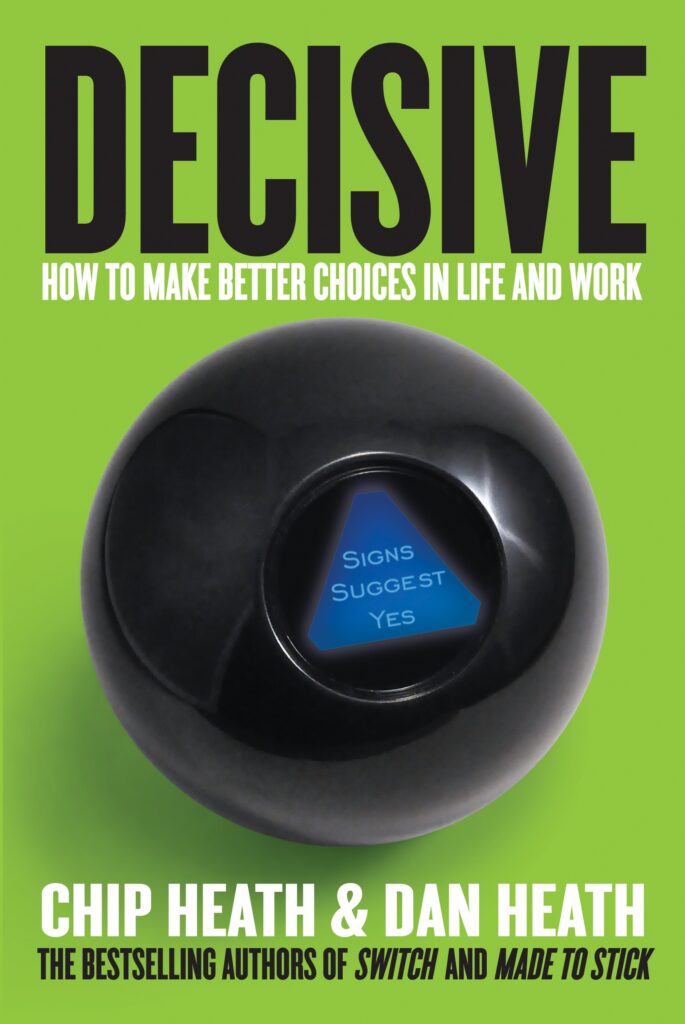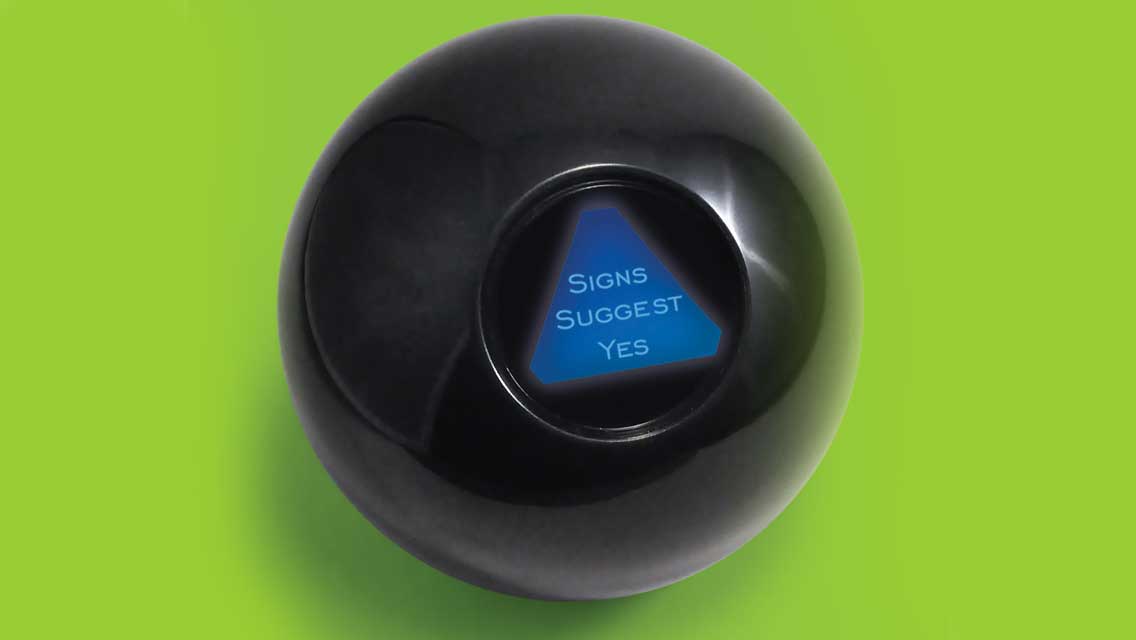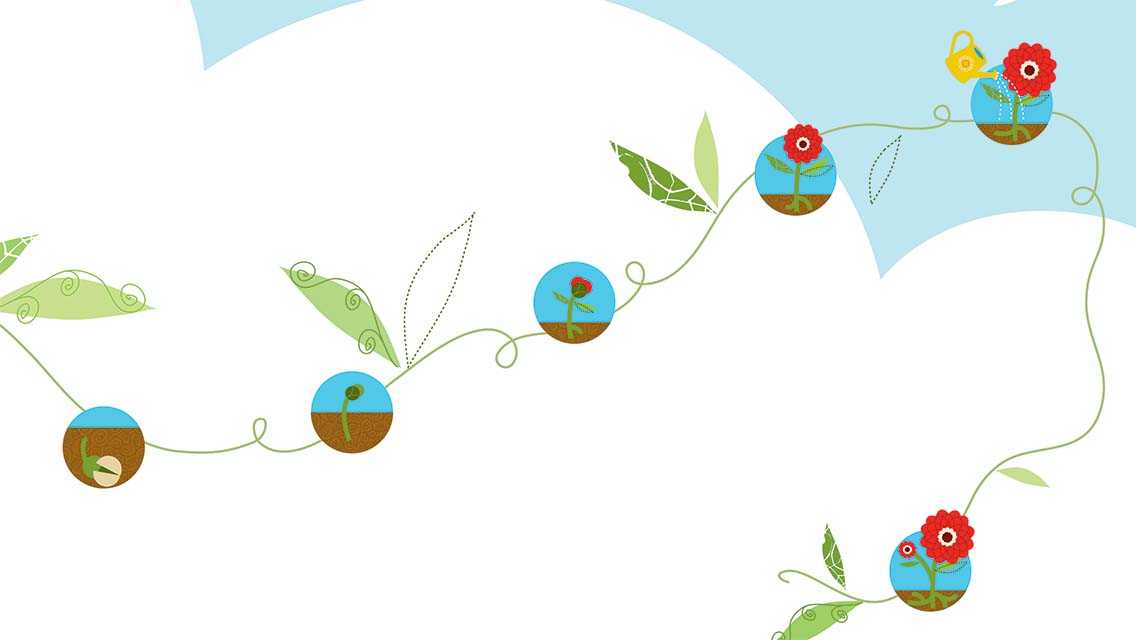When faced with an agonizing decision, how often have you been advised to just trust your gut?
 Business strategists Chip and Dan Heath admit there is much to be said for this sort of intuitive decision making, but in their new book, Decisive: How to Make Better Choices in Life and Work, they argue that “intuition is only accurate in domains where it has been carefully trained.”
Business strategists Chip and Dan Heath admit there is much to be said for this sort of intuitive decision making, but in their new book, Decisive: How to Make Better Choices in Life and Work, they argue that “intuition is only accurate in domains where it has been carefully trained.”
Snap decisions serve the NFL quarterback deciding which receiver to hit with a pass, for instance — he’s made that choice thousands of times. But not the corporate executive charged with deciding whom to lay off.
For major decisions in unfamiliar arenas (from buying a car to choosing a life partner), the Heaths advise setting aside some time. If only because we often spend precious little of it deliberating even our most important choices.
Making quick decisions, the Heaths note, usually suggests we’re under the influence of the “spotlight effect,” combining the most accessible information (“The bike is expensive; I want it”) with our interpretation (“If it’s expensive, it must be well made”).
But to make truly good choices, we need to examine more than what’s immediately visible. And to interrupt the innate tendency to jump headlong into decisions, the Heaths believe in having a “tripwire.”
The WRAP Method
A tripwire is a reminder device, helpful when you might be mentally busy or emotionally overwhelmed. Some people tie string around their fingers; others put rubber bands on their wrists. When it comes to navigating the mental pitfalls that frequently accompany important choices, the Heaths’ tripwire is an acronym: WRAP. It stands for:
- Widen your options;
- Reality-test your assumptions,
- Attain distance before deciding, and
- Prepare to be wrong.
What follows are the four steps of their program for overcoming the “four villains of decision making,” including short-term emotion and overconfidence.
1. Widen Your Options
The first decision-making villain is “narrow framing.” It’s in play whenever a choice is framed in either/or terms: “Should I buy the expensive shoes or the cheap ones?” “Should I fire this person or not?” Narrow framing is a direct result of the aforementioned spotlight effect: When we’re focused strictly on what’s in front of us, we neglect the less visible possibilities. When we don’t avail ourselves of all our options, we often miss the best ones.
This is why the antidote to narrow framing is to deliberately widen your options. If you’re debating whether to fire someone, try the Heaths’ “Vanishing Options Test.”
Imagine you couldn’t fire the person — now what would you do? Move him to a different position that might better suit his strengths? Switch him to another team with different personalities? Quit yourself? Removing the original choice forces you to look outside the spotlight.
You can also try viewing a situation in terms of “opportunity cost.” If you’re debating between two pairs of shoes, consider the outfit you could buy with the remaining money if you bought the cheaper ones. Conversely, the nice pair might liven up your current wardrobe, thus eliminating the need for a new outfit and buying you more wardrobe power than the cheaper pair.
The point is to consider everything you could do with the resources you’re currently allocating to shoes (or a car or college tuition), rather than getting stuck on the question of this one or that one.
2. Reality-Test Your Assumptions
Researching decisions is wise, but too often it doesn’t help, because we’re conditioned to seek data that supports our prior assumptions. The Heaths call this “confirmation bias,” and it’s the second villain of decision making.
To outwit this bias, they recommend asking “disconfirming questions” to gather more trustworthy information and reality-test your current assumptions. For example, if you’re strongly considering a new job but have questions about how much the employees really work, don’t ask them how much they like the job. “Ask them how many times they had dinner with their families last week,” the Heaths suggest. “And ask them what time they ate.”
Another reality test is “extreme disconfirmation.” This involves considering the opposite of your instincts. If you’re sure a player in your basketball league fouls you more than others, consider the opposite: Could she be fouling you less than everyone else? It may not turn out that she’s taking it easy on you, but opening your eyes to the opposite means you might see that others are getting the same treatment.
3. Attain Distance Before Deciding
Salespeople are trained to capitalize on a buyer’s excitement; we quit jobs and relationships in the midst of heated arguments; we refuse big opportunities because we’re feeling tired or unmotivated. Short-term emotion is the third villain of decision making, and the way around it, according to the Heaths, is to “attain some distance.”
They suggest using a “10/10/10” exercise to help generate perspective. Consider how you’d feel 10 minutes after making a choice, then 10 months, then 10 years. This releases the emotional grip of this moment.
You can also imagine your best friend trying to make the same choice; then take the advice you would give him. The Heaths asked multiple people stumped by decisions what they would tell their best friends; almost all came up with clear answers in record time. “The advice we give others has two big advantages,” they write. “It naturally prioritizes the most important factors in the decision, and it downplays short-term emotions.”
4. Prepare to Be Wrong
The average person leaving the racetrack (or the stock market) with empty pockets is probably sure that he or she bet on a sure thing. Overconfidence is the fourth villain of decision making, and the best way to overcome it is to prepare for the worst. This strategy is used less to help you select between options than it is to ensure the choice you do make is a good one.
Once again, it involves defeating the “spotlight effect.” When you look at the future, the Heaths suggest remembering that it comprises “a range, not a point.”
Contemplate and prepare for a set of possible outcomes from your decision, not just one. Such preparation allows you to feel secure about your choice to go forward, and you know you’re ready for whatever may come. And isn’t that all we really want from any choice we make?
This article originally appeared as “Ready, Aim . . . Aim Again” in the October 2013 issue of Experience Life.




This Post Has 0 Comments